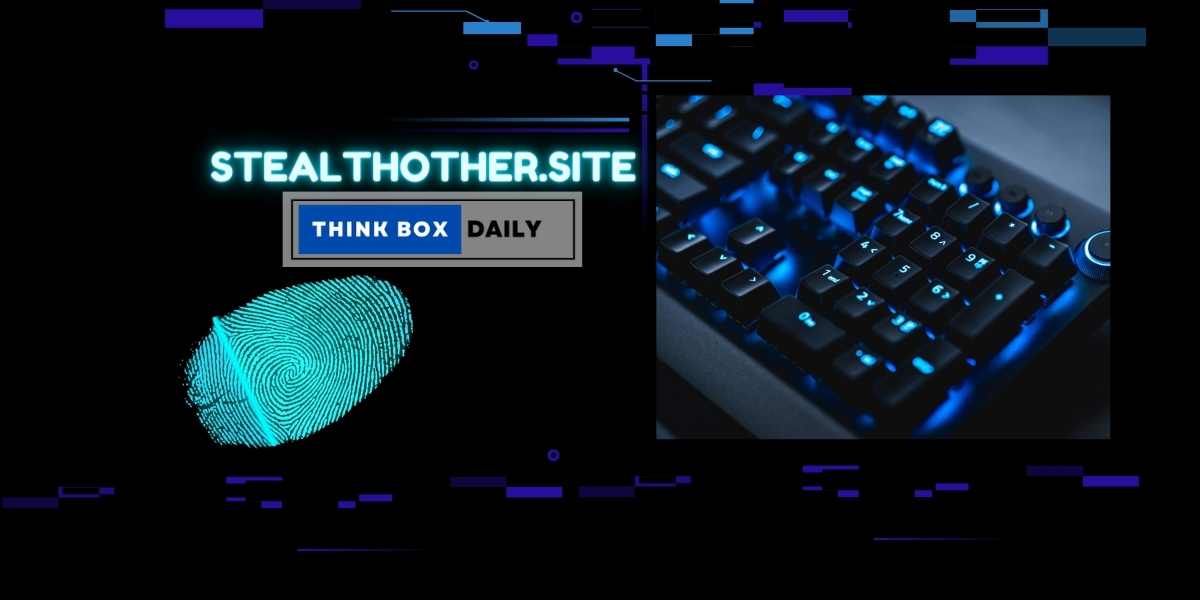Did you know that in 2023, a staggering 4.1 billion data records were breached globally? This stat highlights the ever-present need for robust online privacy protection.
In this digital age, tools like Stealthother.site have emerged, promising a cloak of invisibility online. This platform claims to enhance your online security and anonymity, allowing you to browse, send emails, and conduct transactions with greater privacy.
But is Stealthother.site the ultimate solution for online anonymity? This comprehensive guide dives deep into the world of Stealthother.site, exploring its features, potential benefits, and any lingering questions you might have. Our goal is to empower you with the information you need to make informed decisions about your online privacy.
Table of Contents
Understanding Stealthother.site: Unveiling Its Promises and Potential
What it Does
Stealthother.site positions itself as a one-stop shop for enhanced online privacy. Here’s a breakdown of its core functionalities:
- Secure Browsing: It claims to encrypt your internet traffic, potentially shielding your browsing activity from prying eyes like internet service providers (ISPs) or government surveillance.
- Encrypted Email: Stealthother.site might offer features to send and receive emails with enhanced encryption, making it more difficult for unauthorized parties to intercept your messages.
- Anonymized Transactions: The platform advertises the ability to conduct online transactions while masking your identity, potentially providing a layer of anonymity for financial activities.
Claimed Advantages
These functionalities translate into potential benefits for users seeking greater online privacy:
- Increased Privacy: By encrypting your data, Stealthother.site could theoretically prevent third parties from tracking your online activities, browsing history, or email content.
- Protection from Data Breaches: Encryption adds a layer of security to your data, potentially making it less vulnerable if a website experiences a data breach.
- Bypassing Censorship: In countries with internet restrictions, Stealthother.site might offer a way to access censored content, although its effectiveness in this area is debatable (more on that later).
Technical Deep Dive
For tech-savvy readers, here’s a simplified explanation of the technology potentially behind Stealthother.site:
- Encryption: This process scrambles your data using a secret key, making it unreadable without the key. Stealthother.site might utilize various encryption protocols to secure your browsing, emails, and transactions.
- Anonymity Tools: The platform could leverage technologies like anonymizing networks or proxy servers to mask your IP address, making it harder to pinpoint your location.
Important to Note:
While Stealthother.site outlines these functionalities, the specific details of its technology and effectiveness remain unclear due to a lack of transparent information available about the platform itself. This lack of transparency is a crucial point we’ll address later in the article.
Also Read: IS THE NVIDIA GEFORCE GTX 1050 MOBILE 2GB STILL WORTH IT?
A Critical Look: Unveiling the Questions Behind Stealthother.site
Limited Information: A Cause for Concern
One of the biggest hurdles with Stealthother.site is the lack of readily available information about the platform itself. Unlike established privacy tools, details about Stealthother.site’s technology, ownership, and track record are scarce. This lack of transparency makes it difficult to fully assess its effectiveness and trustworthiness.
Why Transparency Matters:
When it comes to online security, choosing reliable tools is paramount. Trustworthy platforms are more likely to adhere to strong security practices and be upfront about their capabilities. Without transparency, it’s impossible to know for sure if Stealthother.site delivers on its promises.
Anonymity vs. Pseudonymity: Setting Realistic Expectations
It’s important to understand the difference between true anonymity and pseudonymity when considering Stealthother.site.
- True Anonymity: This is incredibly difficult to achieve online. Every digital interaction leaves traces, making complete anonymity a near-myth.
- Pseudonymity: This involves masking your true identity online, potentially through usernames or anonymizing tools. Stealthother.site might offer features that achieve pseudonymity, making it harder to track your activity back to you personally.
Potential Drawbacks to Consider
While the idea of enhanced privacy is appealing, using Stealthother.site comes with some potential drawbacks:
- Limited Functionality: Some privacy tools can restrict access to certain websites or functionalities. It’s unclear if Stealthother.site impacts your browsing experience.
- Compatibility Issues: Not all software works seamlessly with every system. Stealthother.site might have compatibility issues with certain devices or browsers.
- Unclear Legal Aspects: Depending on your location, using anonymizing tools might have legal implications. It’s crucial to research local laws before relying on Stealthother.site for sensitive activities.
Alternatives and Best Practices for Online Privacy
Exploring Established Privacy Tools
While Stealthother.site raises questions, there are established tools with proven track records to consider for online privacy:
- Tor: This free, open-source network routes your traffic through a distributed network of relays, making it more difficult to track your online activity.
- Privacy-Focused Browsers: Browsers like Brave or DuckDuckGo prioritize user privacy by blocking trackers and offering enhanced anonymity features.
Remember: No single tool guarantees complete anonymity. However, these established options provide a foundation for increased online privacy that might be a better fit than Stealthother.site given its current limitations.
Beyond Software: Building a Privacy-Conscious Framework
Software tools play a role, but online privacy is a multifaceted issue. Here are some additional best practices to consider:
- Strong Passwords & Two-Factor Authentication: Use unique, complex passwords for all your accounts and enable two-factor authentication (2FA) for an extra layer of security.
- Social Media Savvy: Be mindful of what information you share on social media platforms. Consider privacy settings and limit unnecessary data exposure.
Beware of Phishing Attempts: Cybercriminals may try to exploit your desire for privacy by creating fake websites or emails mimicking legitimate privacy tools. Always double-check website URLs and download software from trusted sources.
Staying Informed:
The online privacy landscape is constantly evolving. Stay informed by subscribing to reputable cybersecurity resources or blogs that provide updates on best practices and emerging threats.
Conclusion: Taking Charge of Your Online Privacy
Stealthother.site promises enhanced online privacy and anonymity through features like secure browsing, encrypted email, and anonymized transactions. While these functionalities hold some appeal, the lack of transparency about the platform’s technology and ownership raises concerns.
It’s important to acknowledge that Stealthother.site might offer some benefits for pseudonymity and data protection. However, the current limitations make it difficult to fully assess its effectiveness.
The best approach to online privacy is multifaceted. Here’s what you can do:
- Prioritize Privacy: Make online privacy a conscious priority in your digital life.
- Research Before You Use: If you’re considering anonymity tools, conduct thorough research before using any platform, including Stealthother.site.
- Explore Established Alternatives: Consider well-regarded privacy tools like Tor or privacy-focused browsers.
Remember: True anonymity online is highly difficult to achieve. However, by combining these strategies, you can significantly enhance your online privacy and data security.
The fight for online privacy is an ongoing battle. Here are some resources to equip you further:
- The Electronic Frontier Foundation (EFF): https://www.eff.org/ (a leading advocate for digital privacy rights)
- The Open Web Application Security Project (OWASP): https://owasp.org/ (provides resources and guidance on building secure web applications)
- Stay Updated: Subscribe to reputable cybersecurity blogs or publications to stay informed about the latest online threats and best practices.

